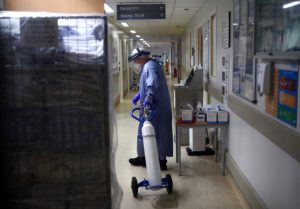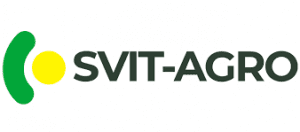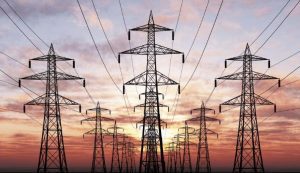
Pork production in Ukraine in 2021 will grow by 3.1%, poultry – by 0.1%, while beef production will decrease by 6%, milk and dairy products – by 4.2%, eggs – by 4.3%, fish catch – by 2.3%, such balances of supply and demand were announced by the Ministry of Economy.
Production of poultry in Ukraine in 2021 will amount to 1.43 million tonnes, exports will decrease by 0.9%, to 430,000 tonnes, and imports by 7.1%, to 104,000 tonnes.
Annual supply of poultry on the domestic market will exceed demand by 1.3 times, by 326,000 tonnes in absolute terms.
Pork production in Ukraine in 2021 will grow by 3.1% compared to 2020, to 740,000 tonnes, and demand will exceed supply by 10.9%, or 90,000 tonnes. Imports of this product over the same period will decrease by 2.9%, to 100,000 tonnes, while exports will grow by 20%, to 10,000 tonnes.
Beef production in Ukraine in 2021 will decrease compared to 2020 by 6%, to 294,000 tonnes, and the domestic supply will exceed the demand by only 3.6%, or 11,000 tonnes. According to the department, in such conditions, exports will fall by 26.3%, to 28,000 tonnes, while imports will grow by 5.8%, to 17,000 tonnes.
Production of milk and dairy products in Ukraine in 2021 will decrease by 4.2% compared to 2020, to 9.10 million tonnes, of which 2.79 million tonnes will be produced by enterprises, and the rest – by households. At the same time, the import of this product over the same period will increase by 0.08%, to 750,000 tonnes, and exports will decrease by 10.4%, to 360,000 tonnes, which is a consequence of the excess of domestic demand over domestic supply at the level of 420,000 tonnes.
Egg production in Ukraine in 2021 will decrease by 4.3% compared to 2020, to 896,000 tonnes. The catch and production of fish and fish products in Ukraine in 2021 will grow by 2.3% compared to 2020, to 126,000 tonnes.

Kazakhstan is increasing the number of regular flights with Russia, Kyrgyzstan, Uzbekistan, Ukraine, and the Maldives.
The relevant decision was made by the interdepartmental commission to prevent the spread of Covid-19, the civil aviation committee of the Kazakh Industry and Infrastructure Development Ministry said on Wednesday.
Thus, in accordance with the interdepartmental commission’s decision, the number of flights to Russia will increase by seven in general, from three to 10 flights per week on each side. This includes the number of Nur-Sultan-Moscow flights increasing from two to four per week on each side and Almaty-Moscow flights increasing from one to four per week on each side. Shymkent-Moscow flights, one per week on each side, and Aktau-Moscow, one per week on each side, are resumed.
The number of flights to the Maldives is up from four to seven per week for Kazakh companies on the Almaty-Male route.
The number of Almaty-Bishkek (Kyrgyzstan) flights is increasing from two to three per week.
Along with this, the number of flights to Uzbekistan is increasing from three to four (on each side) due to one more Nur-Sultan-Tashkent flight per week. Since September 11, one flight has been performed on the Nur-Sultan-Tashkent route and two on the Almaty-Tashkent route.
The number of flights to Ukraine is increasing to two, due to the resumption of one flight per week on the Nur-Sultan-Kyiv route. In August 2020, flights on the Almaty-Kyiv route were resumed.

Insurance companies of Ukraine in 2020 paid profit tax to the state and local budgets in the amount of UAH 1.674 billion, which is UAH 334 million (24.5%) more than in the same period in 2019, and 51, 5% more than in 2018, Oleksandr Zaletov, the vice president of the League of Insurance Organizations of Ukraine (LIOU), has said.
According to him, as a result of the impact of the COVID-19 pandemic, a significant trend in 2020 was the revision of business strategies for almost all insurance companies without exception. The drop in sales for a number of types of insurance (Green Card, tourism, KASKO) encouraged insurers and insurance intermediaries to digitalize. To one degree or another, distance sales and settlement using Internet technologies have become the main strategic objectives of the digitalization of the Ukrainian insurance market. In fact, an indicator of the competitiveness and investment attractiveness of the insurer was the ability to remotely conclude or renegotiate an insurance contract, amend it, and provide documents to the insurer confirming the insured event.
According to Zaletov, unfortunately, the legal framework and technologies for remote servicing of insurance companies’ clients lag significantly behind the needs and need further reform. In addition, on the way of increasing the customer focus of insurers, the tasks of improving the legislative regulation of issues aimed at protecting the rights of consumers of insurance services and countering their discrimination in the field of insurance are of particular importance. In this regard, it should be noted that basing an insurance rate on a characteristic that cannot be changed is contrary to the ideals of the EU and fairness.
“The terms of insurance contracts must not be excessive, inadequate or unfairly discriminatory, for example, direct or indirect restriction of citizens’ rights on the basis of race, color, political, religious and other beliefs, gender, age, health status, disability, ethnic and social origin, property status, residence, linguistic or other characteristics,” he said.
According to Zaletov, other representatives of non-banking financial markets, primarily financial companies, lessors and pawnshops, are also steadily increasing tax payments. So in 2020 they paid profit tax in the amount of UAH 604 million to the state and local budgets, which is UAH 196 million (47.1%) more than in the same period of 2019, and 149.6% more than for 2018.

Mobile network operator Kyivstar handed over 55 Biomed JAY-10 oxygen concentrators to 12 hospitals in Kyiv city, Kyiv, Cherkasy, Chernivtsi, Vinnytsia, Poltava, Luhansk, Dnipropetrovsk, Kirovohrad and Khmelnytsky regions, the operator said on Thursday. “Big business is helping society to overcome the coronavirus pandemic. I am glad that we continue providing the necessary equipment to combat the pandemic,” the press service said, citing President of Kyivstar Alexander Komarov as saying.
He also recalled that in 2020, Kyivstar donated 10 Savina 300 Select ventilation and respiratory monitoring devices with consumables for them, 20 Vista 120 patient monitors and 6,851 reusable protective suits for medical workers from 30 referral hospitals.
The project is being implemented in partnership with the Tvoya Opora Charitable Foundation, which monitored medical institutions that receive patients with coronavirus.
According to the report, the charitable organizations with which Kyivstar cooperates have undergone thorough international checks by the VEON parent group regarding the ethics of their business.
As reported, during the quarantine, Kyivstar provided assistance with bonuses to the accounts of almost 70,000 doctors, and for three summer months they were given access to unlimited Internet. The total amount of support provided by the operator totaled approximately UAH 80 million.

The Antimonopoly Committee of Ukraine has allowed Viktor Bazilchuk, who is listed as director of Agrolife GmbH on the website of the German supplier of animal feed and additives Agrolife GmbH, to buy more than 50% in Agrolife’s partner company Svit-Agro (Kyiv), which supplies feed additives and veterinary medicine.
The relevant permit was issued on January 28. The acquisition is planned indirectly through Austinola Limited (Cyprus).
According to the public register, the largest owner of Svit-Agro Trading House with 75.1% is Oleksandr Tymoshenko, who in late 2019 – early 2020 applied for the position of head of the State Fisheries Agency of Ukraine and had the highest score in the evaluation of candidates.
In addition, the company’s beneficiaries include Oleksandr Schnir’s Bridgewater Holdings Corp with 16.6% and Alarico Ltd (Belize) with 8.3%.
In his declaration, Tymoshenko indicated 25% in meat processing complex Stolychny LLC where 75%, according to the public register, belong to Bazilchuk. According to the data on the website, Stolychny has been exporting chicken since 2017, annually exporting about 2,600 tonnes of poultry meat.
According to the committee, the buyer’s group is engaged in the production and wholesale of animal feed, wholesale of grain, meal, cake, eggs, meat and meat products, pharmaceuticals and veterinary drugs, as well as provides processing and storage of grain, rents real estate.
Agrolife GmbH, according to the information on its website, is a supplier of oilseeds, cereals and feed additives for livestock in the markets of Germany, the EU and Ukraine. Agrolife GmbH together with the Danish Fermentationexperts AS are the founders of European Protein Ukraine LLC (Kyiv region).
In July 2018, the committee allowed Agrolife GmbH to acquire the Cypriot Cotone Investments Limited, which owns 100% of the shares of the feed manufacturer PJSC Kyiv-Atlantic Ukraine (Myronivka, Kyiv region). In the public register, the beneficiaries of Kyiv-Atlantic Ukraine through Agrolife GmbH are Natalia Bazilchuk with 56.33% and Borys Skyba with 18.78%.

Ukraine in January 2021 reduced electricity exports by 92.6% (by 645.3 million kWh) compared to the same period in 2020, to 51.9 million kWh, according to the data of NPC Ukrenergo. According to the calculations of Interfax-Ukraine, in particular, supplies from the Burshtyn TPP energy island in the direction of Hungary, Slovakia and Romania fell by 89.7% (by 448.9 million kWh), to 51.9 million kWh.
Electricity was not supplied to Poland and Moldova last month, while in January last year, 151.2 million kWh and 45.2 million kWh were exported in these directions, respectively.
Ukrainian electricity also was not exported to Belarus and the Russian Federation in January 2021 and 2020.
In addition, in January 2021, Ukraine reduced electricity imports by 52.4% (by 292.4 million kWh) compared to the same period last year, to 268.3 million kWh, including Belarus supplied 180.6 million kWh, Slovakia – 78.3 million kWh, Hungary – 6.9 million kWh, and Romania – 2.5 million kWh.
In addition, as Inter-Transmission Compensation mechanism associated with the parallel operation of the IPS of Ukraine with the power systems of neighboring countries and power supply to dead-end areas, 6.26 million kWh of electricity was imported from the Russian Federation last month and 0.01 million kWh from Belarus.
Emergency supplies from Belarus amounted to 3.13 million kWh, and 0.08 million kWh to Belarus.